Fungi as biological control: the terror of bugs
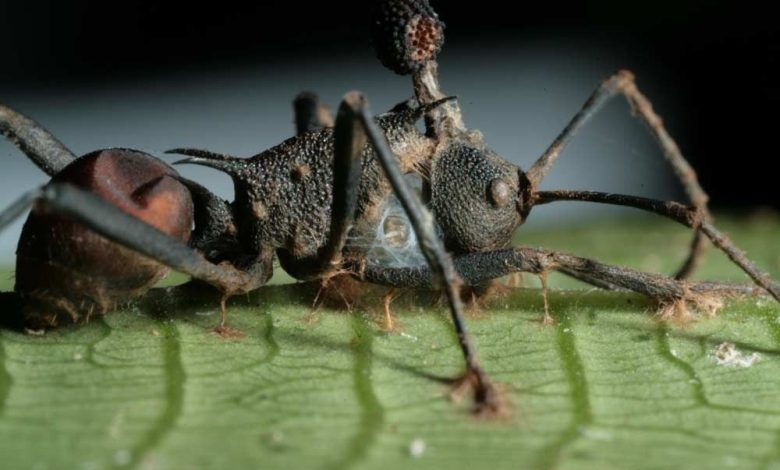
Hello to all agrohuerters! Today we are looking for alternative methods to chemical products to fight pests and diseases of our crops. Among one of these alternative methods is the biological control of pests and diseases. Of all the possible organisms used in biological control, we are going to focus on how fungi work as biological control.
To start at the beginning… are we clear about what biological control is? With which organisms can we carry out biological control? Is biological control effective…?
In today’s article we are going to answer all those questions.
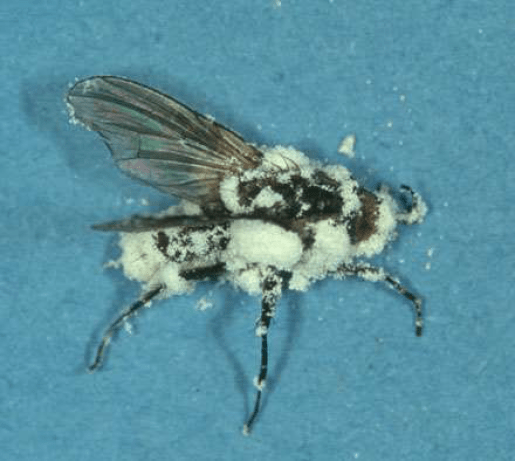
Why are these types of fungi the terror of some bugs? We will see it next…
What is biological pest control?
Biological control consists of the use of living organisms (or their products) to regulate crop pests and diseases. These biological control organisms include: Insects (predators or parasitoids), mites, nematodes, microorganisms (fungi, viruses and bacteria). This control method is part of integrated pest control, which aims to integrate various control methods in order to reduce the use of chemicals on crops.
There are different types of biological control that can be used:
- Biological control by augmentation: a short-term method that promotes the development of auxiliaries in a single place (by inoculation or flooding). This method is linked to private collaborators, known as “biofactories”. The collaborators have as their objective mass production, conditioning, distribution and, sometimes, advice on the products. An example of biological control by augmentation is the use of Macrolophus pygmaeus against whitefly (Trialeurodes vaporarorium) in greenhouses.
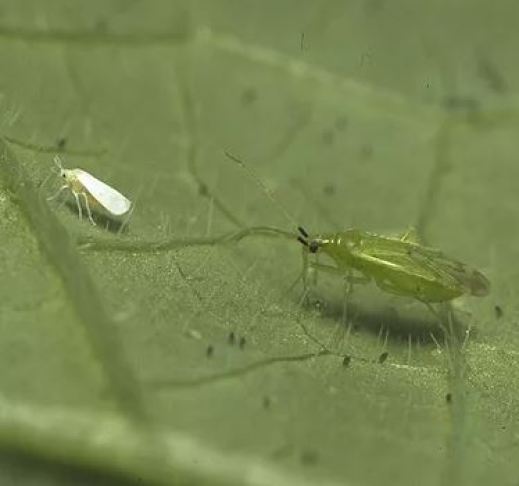
- Biological control by acclimatization: involves the introduction of exotic auxiliaries in a given region.
- Conservation biological control: also called « natural regulation », which implies the creation of a favorable environment (establishment of hedges, perennial plants, grass paths, etc.) for the implementation of native auxiliaries. This can be achieved by providing alternative food sources, prey, alternative hosts, or improved habitats.
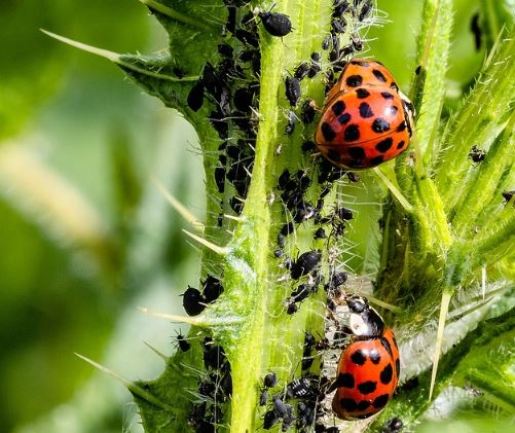
Fungi as biological pest control: entomopathogenic fungi
The use of fungi as biological control is part of biological control with microorganisms, as well as bacteria and viruses. It has been done for many years. In 1874, L. Pasteur and Le Conte had already mentioned it. But it was not until a few years later that it began to be applied in some experimental trials.
There are more than 800 species of fungi that can attack insects and mites. Among them, the most used mushrooms are:
- Beauveria bassiana
- Beauveria brongniartii
- Metarhizium anisopliae
- Metarhizium flavoviride
- Paecilomyces fumosoroseus
- Lecanicilium (Verticillium) lecanii
- Ashersonia aleyrodis
These entomopathogenic fungi that we have just seen, are mainly used to fight against the following pests:
- Homoptera (whiteflies and aphids)
- Lepidoptera (butterflies and moths)
- Coleoptera (Beetles)
- Hemiptera
- orthoptera
- thrips
- termites
- Mites
When the fungi come into contact with the insect, penetration through the integuments occurs. Once the fungus is inside the insect, it begins to expand until it ends in the death of the insect. Simple truth?
Here are some examples of fungi for pest control (entomopathogenic fungi):
Beauveria bassiana as biological control
Beauveria bassiana is one of the most used fungi in biological control due to the large number of pests it can attack (caterpillars, termites, whiteflies, aphids,…).
This fungus grows naturally in soils anywhere in the world. It causes a disease in insects known as » white muscardine disease «.
Currently, this fungus is being used against the plague of the red palm weevil (a kind of weevil) of the palm trees of Elche (Alicante).
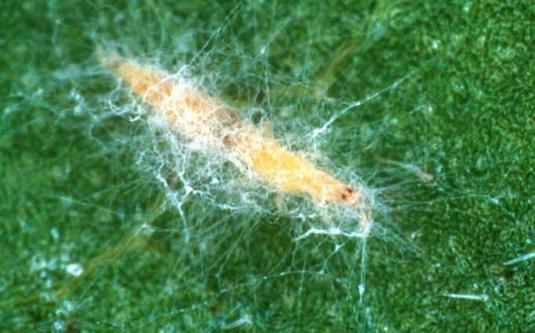
Biological pest control with Metarhizum sp.
If another fungus had to be highlighted after Beauveria, it would be Metarhizum sp. As in the previous case, it presents a large number of «bugs» that it can attack.
I am going to leave you here some photographs that speak for themselves. Now you will understand why we call it the terror of insects. If insects went to the movies we can imagine something like a scary movie.
This fungus is highly dependent on environmental conditions. It is normally sold in preparations with spores that have to be in water before application for one day.
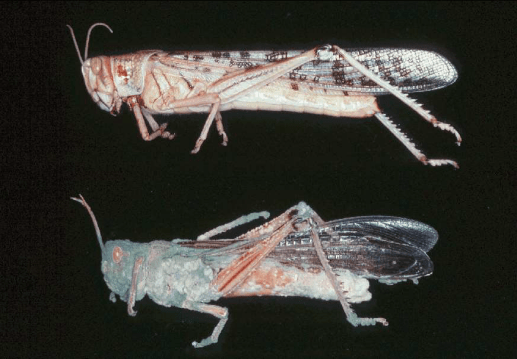
Other fungi used as biological control: Cordiceps sp.
After Beauveria and Metarhizium I present to you Cordiceps. A book could be written about this fungus because it is so interesting and mysterious. The species Cordyceps unilateralis is capable of changing the behavior of some insects. For example, when it infects some ants, it causes them to prune at the top of the plant just before dying to ensure, in this way, that the fungus spores (present on the insect’s corpse) are distributed as much as possible.
Another species known as Cordyceps sinensis, is highly prized in China. There they know it as “zong chao” (grass worm). In ancient times it was used by the elite to achieve longevity and vitality. Currently there are companies that cultivate it naturally for its precious biological and pharmacological interest in China.
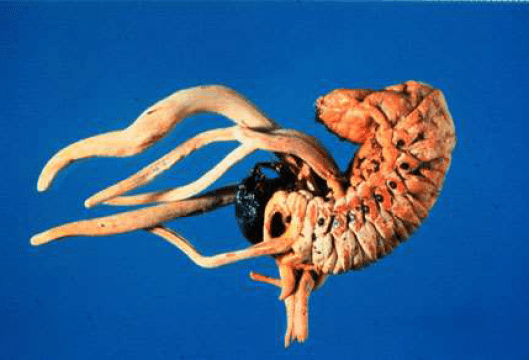
How is biological control with fungi carried out?
As we have said before, agricultural research is very focused on this alternative method of bioaggressor control. The basis for carrying out a good biological control method is based on a few very simple points. For example, if we want to control a new pest, what should we do?
- Research on the pest: Carry out a first investigation on the existing information on that pest. How does the pest behave? When is its time of reproduction? What are the crops that it most affects? What is its weakest state? How to control it in other countries?
- Research on the auxiliary organisms that attack the pest: Next, once we know about the pest, we must find out what auxiliary organisms could attack this pest. They can be other insects, mites, fungi, bacteria or viruses. And as in the previous point, inform us about the life of these auxiliary insects (where they take refuge, when they reproduce, what insects they like,…).
- Information integration: Once we have a lot of information about the pest and its main natural enemies, we must integrate all the information to optimize the control method. What cultural practices should the farmer do to favor biological control? Can biological control be complemented with other control methods such as chemical, mechanical,…).
- Dissemination of information: Finally, farmers must be informed about how these organisms must be used to control the pest. Or also on what are the agricultural practices that most favor the action of auxiliary organisms to put an end to the plague. For example, in the project I did in France we saw how the presence of shrubs and flowers near the plot meant that there were more auxiliary organisms to attack aphids.
Advantages and disadvantages of biological control with fungi
To finish the article we will see what are the main advantages and disadvantages of using fungi as biological control.
Advantages of using fungi as biological control
The main advantages would be:
- Their use hardly present an environmental impact.
- Absence of waste.
- Low cost and easy to produce.
- Persistence and survival of the fungus in the soil.
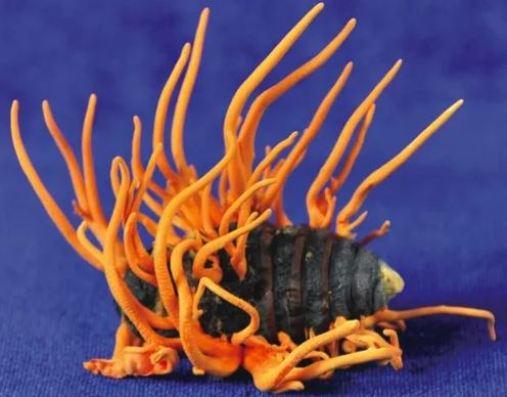
Disadvantages of biological control with fungi
As for the disadvantages, it should be noted:
- Somewhat slow action.
- Calculate the amount of inoculum needed.
- They need an appropriate habitat (with enough humidity).
- The population must be monitored to see how it is acting.
References
- Elliott, N.C., Kieckhefer, R.W., Beck, D. (2000).Adult Coccinellid Activity and Predation on Aphids in Spring Cereals. Biological Control, 173, 218–226.
- Erler, F., Ates, A. (2015). Potential of two entomopathogenic fungi, Beauveria bassiana and Metarhizium anisopliae (Coleoptera: Scarabaeidae), as biological control agents against the June beetle, Journal of Insect Science, 15(1), 44.
- Ortiz-Urquiza, A., Keyhani, N. (2016). Chapter Six – Molecular Genetics of Beauveria bassiana Infection of Insects. Editor(s): Brian Lovett, Raymond J. St. Leger. Advances in Genetics, Academic Press, 94, 165-249.
This is all for today, tell me in the comments if you liked this topic of biological control to do or not more articles about it. On the other hand, if you want to know a little more about how it works, here is a link to another article where we talk about Trichoderma, small wasps that are very effective for use in biological control.
Don’t have nightmares!

![Photo of Bidens: [Cultivation, Irrigation, Care, Pests and Diseases]](https://www.complete-gardening.com/wp-content/uploads/2022/08/bidens-cultivation-irrigation-care-pests-and-diseases-390x220.jpg)


![Photo of Poisonous Yew: [Characteristics, Fruit, Intoxication and Uses]](https://www.complete-gardening.com/wp-content/uploads/2022/08/poisonous-yew-characteristics-fruit-intoxication-and-uses-390x220.jpg)